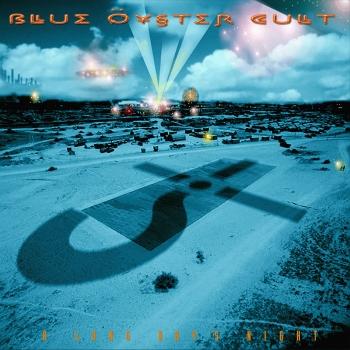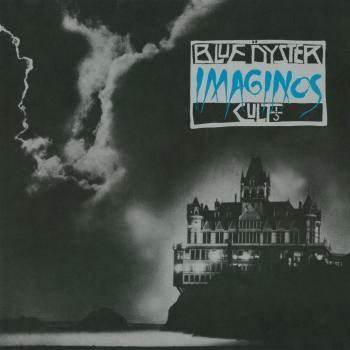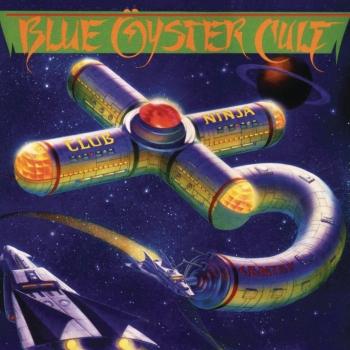
Fire of Unknown Origin (Remaster) Blue Oyster Cult
Album Info
Album Veröffentlichung:
1981
HRA-Veröffentlichung:
13.07.2016
Label: Sony / Columbia / Legacy
Genre: Rock
Subgenre: Hard Rock
Interpret: Blue Oyster Cult
Komponist: A. Bouchard, Eric Bloom, P. Smith, D. Roeser, J. Bouchard, R. Meltzer, L. Myers, J. Trivers, J. Rigg, A. Lanier
Das Album enthält Albumcover
Entschuldigen Sie bitte!
Sehr geehrter HIGHRESAUDIO Besucher,
leider kann das Album zurzeit aufgrund von Länder- und Lizenzbeschränkungen nicht gekauft werden oder uns liegt der offizielle Veröffentlichungstermin für Ihr Land noch nicht vor. Wir aktualisieren unsere Veröffentlichungstermine ein- bis zweimal die Woche. Bitte schauen Sie ab und zu mal wieder rein.
Wir empfehlen Ihnen das Album auf Ihre Merkliste zu setzen.
Wir bedanken uns für Ihr Verständnis und Ihre Geduld.
Ihr, HIGHRESAUDIO
- 1 Fire of Unknown Origin 04:09
- 2 Burnin' for You 04:30
- 3 Veteran of the Psychic Wars 04:48
- 4 Sole Survivor 04:04
- 5 Heavy Metal: The Black and Silver 03:16
- 6 Vengeance 04:40
- 7 After Dark 04:24
- 8 Joan Crawford 04:54
- 9 Don't Turn Your Back 04:07
Info zu Fire of Unknown Origin (Remaster)
Despite the 80's sounding production and arrangements, 'Fire of Unknown Origin' is one of the strongest and most consistent set of songs that Blue Öyster Cult ever had. The album shows the band at their melodically best and most inspired, and there's not a single bad track to be found here. The title-track opens the record, and takes the style of 'Deadline' from the previous album into something even better. 'Burnin' for You' and 'Joan Crawford (Has Risen from the Grave)' remain two of the band's most immediate and catchy songs, and would make it into Blue Öyster Cult's concert repertoire and remained there more or less ever since. 'Veteran of the Psychic Wars' is in my opinion the best of their songs to feature lyrics by Michael Moorcock, and has a complex melody that never fail to impress me. 'Sole Survivor' uses the same female backing vocals that could be found on 'Mirrors', but here it works so much better and more integrated in the band's style. And their melodic harmonies rarely sounded better than on 'Vengeance (The Pact)' and that says quite a lot. 'Heavy Metal: the Black and Silver' is on the other hand more straightforward heavy rock that had more in common with the previous album. 'After Dark' is a fast and catchy pop/rock tune, while the closer 'Don't Turn Your Back' is the only song on the album that may takes some time to fully enjoy. With 'Fire of Unknown Origin', Blue Öyster Cult became one of the very few '70s hard rock bands to release one of their best albums in the 80's.
„Who would have thought that in 1981, after a pair of limp, unfocused studio offerings, and two mixed -- at best -- live outings, that the once mighty Blue Öyster Cult would come back with such a fierce, creative, and uncompromising effort as Fire of Unknown Origin. Here was their finest moment since Agents of Fortune five years earlier, and one of their finest ever. Bringing back into the fold the faithful team who helped articulate their earlier vision, producer Sandy Pearlman, Richard Meltzer, and Patti Smith all helped in the lyric department, as did science-fiction and dark-fantasy writer Michael Moorcock. The band's sound was augmented by a plethora of keyboards courtesy of Allen Lanier, but nonetheless retained a modicum of its heaviness, and the sheer songwriting craft that had helped separate the band form its peers early on was everywhere evident here -- especially the gloriously noir-ish Top 40 single 'Burning for You,' written by Meltzer and guitarist Buck Dharma. Other standouts on the set include the plodding, über-riff pyrotechnics of 'Heavy Metal: The Black and the Silver,' and the Mott the Hoople- and Queen-influenced glammed up roots rock of 'Joan Crawford.' The terrifying images of desecration and apocalyptic war in 'Veteran of Psychic Wars,' with words by Moorcock, feature huge synth lines, dual leads by Dharma and Eric Bloom -- as well as a tom-tom orgy from Albert Bouchard -- offered a new pathway through the eternal night of the Cult's best work. Fire of Unknown Origin has aged well, and deserves to be remastered in the 21st century.“ (Thom Jurek, AMG)
Eric Bloom, vocals, guitar, bass (on track 5)
Donald 'Buck Dharma' Roeser, lead guitar, bass, vocals, percussion
Allen Lanier, keyboards
Joe Bouchard, bass, vocals
Albert Bouchard, drums, synthesizer, vocals
Additional musicians:
Karla DeVito, background vocals (on track 4)
Sandy Jean, background vocals (on track 9)
Bill Civitella, additional percussion (on track 3)
Tony Cedrone, additional percussion (on track 3)
Jesse Levy, string arrangements on (tracks 3, 8)
Recorded 1981 at Kingdom Sound Studios, Long Island, New York; The Automatt, San Francisco, California
Engineered by Clay Hutchinson, Martin Birch
Produced by Martin Birch
Digitally remastered
Blue Öyster Cult
Spanning three decades, Blue Öyster Cult has a long and storied history. The band got its start in the late ’60s on Long Island, New York, as the Soft White Underbelly, but each member had been involved in bands previously in high school and college, before ending up in the “right place at the right time” to create the beginnings of Blue Öyster Cult.
The threads that eventually wove together to create Blue Öyster Cult got their start in upstate New York.
Long Island native Donald Roeser and Albert Bouchard (of Watertown, New York) met at Clarkson College, in Potsdam, NY. The two were introduced by a mutual friend, Bruce Abbott (who later co-authored “Golden Age of Leather” with Donald). With Abbott and two other friends, they formed “The Disciples” and played college parties and local beer halls. The next year, the band reformed and played the same circuits as “Travesty” (named after the Blues Project album). Through all this, their studies fell by the wayside, and both Albert and Donald decided to quit college to concentrate on playing music full-time.
Eventually “Travesty” broke up, Donald and Albert took seperate paths for a while. Donald went back to Long Island, and Albert took a musical opportunity in Chicago. After moving there, though, the band fizzled, and Albert returned to NY and joined Donald. In the meantime, Donald had been jamming with local musicians, and had met a person that would become very influential in their future: Sandy Pearlman.
Sandy Pearlman became interested in rock music around the time of the British Invasion, and was a pioneering voice of rock criticism, opening a new field for creative writers like Lester Bangs. Both Pearlman and his friend Richard Meltzer were contributors for seminal magazine “Crawdaddy!,” the first magazine that dedicated itself to analysis of rock music and its culture.
Allen Lanier came into the fold by way of guitarist John Wiesenthal. Allen had accepted employment at a film company at which Wiesenthal was also an employee. After becoming acquainted, Wiesenthal invited Allen out to Long Island to meet and jam with the loose group of musicians he played with, and Allen began to regularly jam with them.
An old house near Stony Brook College became ground zero for the formative band, and casual jams with whomever happened to be hanging around began to turn into rehearsals with a core band, which included Wiesenthal, Donald, Albert, Allen and Andrew Winters, a school friend of Donald. It was 1967.
Pearlman (along with Meltzer and Wiesenthal) had been a student at Stony Brook, and was becoming increasingly involved in the music scene. When he heard the formative combo, he instantly recognized the talent at work. He had an idea for a band, and thought that this group of musicians had the chops to put that idea into play. The musicians saw that Pearlman’s contacts and stature in the local (and increasingly national) scene could help them spawn a career as well, and an alliance was formed.
Dieses Album enthält kein Booklet





















